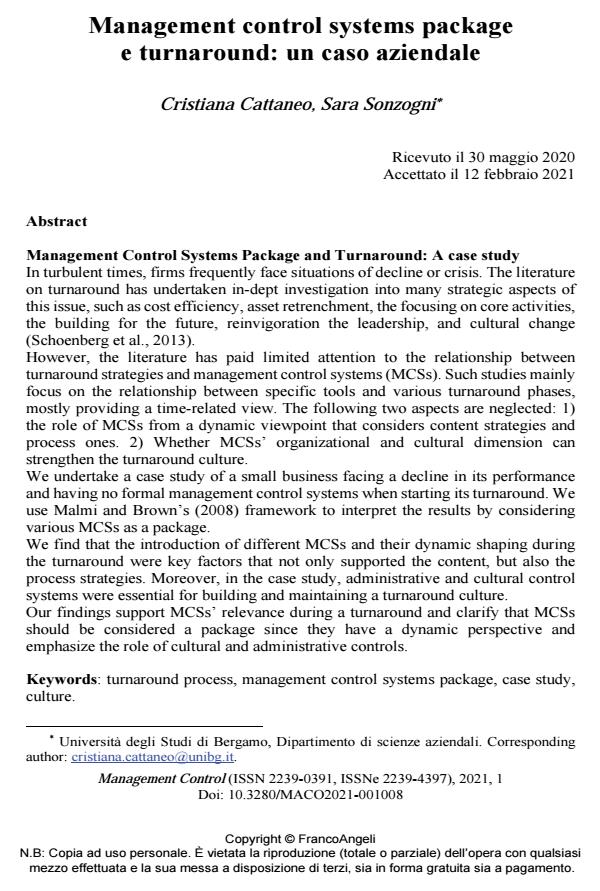Management Control Systems Package and Turnaround: A case study
Journal title MANAGEMENT CONTROL
Author/s Cristiana Cattaneo, Sara Sonzogni
Publishing Year 2021 Issue 2021/1
Language Italian Pages 24 P. 151-174 File size 443 KB
DOI 10.3280/MACO2021-001008
DOI is like a bar code for intellectual property: to have more infomation
click here
Below, you can see the article first page
If you want to buy this article in PDF format, you can do it, following the instructions to buy download credits

FrancoAngeli is member of Publishers International Linking Association, Inc (PILA), a not-for-profit association which run the CrossRef service enabling links to and from online scholarly content.
In turbulent times, firms frequently face situations of decline or crisis. The literature on turnaround has undertaken in-dept investigation into many strategic aspects of this issue, such as cost efficiency, asset retrenchment, the focusing on core activities, the building for the future, reinvigoration the leadership, and cultural change (Schoenberg et al., 2013). However, the literature has paid limited attention to the relationship between turnaround strategies and management control systems (MCSs). Such studies mainly focus on the relationship between specific tools and various turnaround phases, mostly providing a time-related view. The following two aspects are neglected: 1) the role of MCSs from a dynamic viewpoint that considers content strategies and process ones. 2) Whether MCSs’ organizational and cultural dimension can strengthen the turnaround culture. We undertake a case study of a small business facing a decline in its performance and having no formal management control systems when starting its turnaround. We use Malmi and Brown’s (2008) framework to interpret the results by considering various MCSs as a package. We find that the introduction of different MCSs and their dynamic shaping during the turnaround were key factors that not only supported the content, but also the process strategies. Moreover, in the case study, administrative and cultural control systems were essential for building and maintaining a turnaround culture. Our findings support MCSs’ relevance during a turnaround and clarify that MCSs should be considered a package since they have a dynamic perspective and emphasize the role of cultural and administrative controls
Keywords: Turnaround process, management control systems package, case study, culture.
Cristiana Cattaneo, Sara Sonzogni, Management control systems package e turnaround: un caso aziendale in "MANAGEMENT CONTROL" 1/2021, pp 151-174, DOI: 10.3280/MACO2021-001008